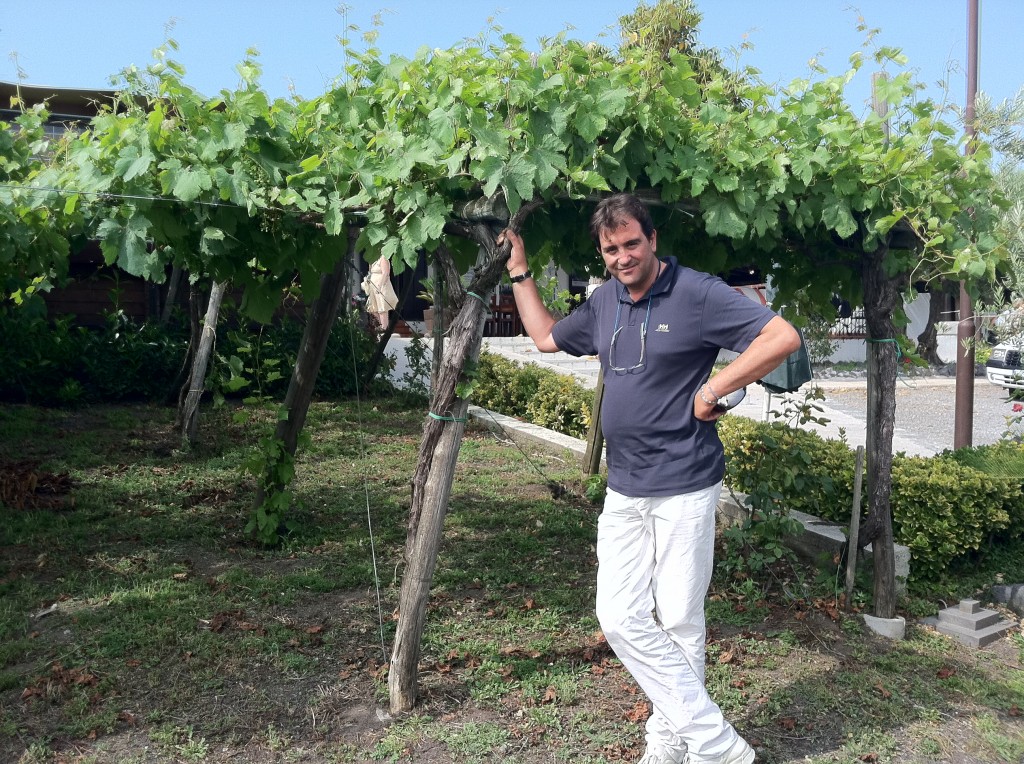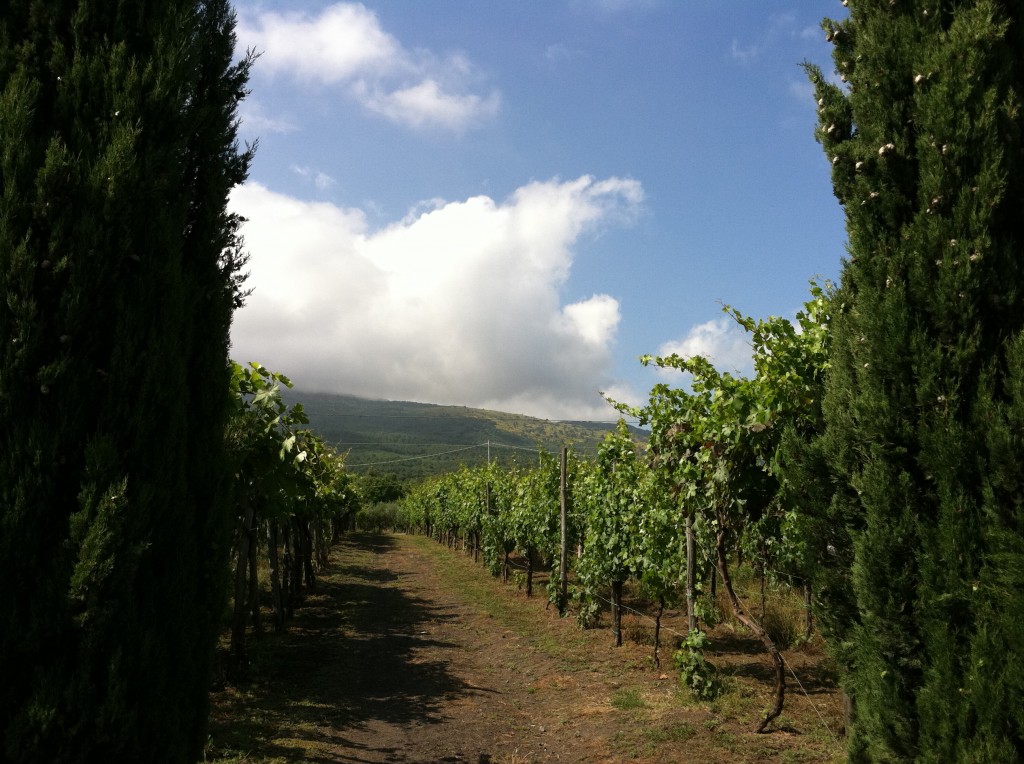
By Patrick Hunt –
On the southern flanks of Mt. Vesuvius in Campania south of Naples, here seen above the farming village of Trecase, winemakers like Maurizio Rosso continue traditions that are several thousand years old. No doubt the fertility of Campania is assured by the rich volcanic soil of Vesuvius, and everywhere on the ground one can see bits of volcanic rock scattered along the topsoil between the rows of vines. One of these famous wines noted in Campania for centuries is the Lacryma Christi (“Tears of Christ”).
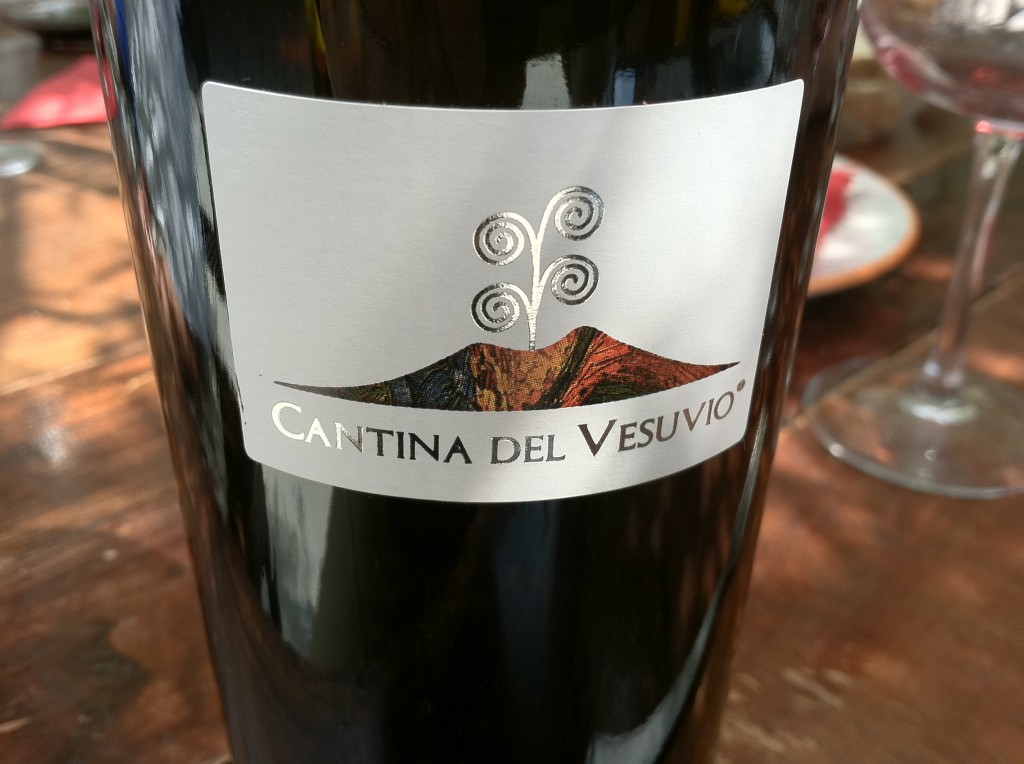
More ancient varietals are also grown in this volcanic region of Campania, with names like Massico and Falernio that recall at least the praise of the Roman poet Horace whose odes often regale such viticultural standouts. In June 2011, the author went to Cantina Vesuvio in Trecase for a degustazione and lunch. Among the wines tasted from this 11 hectare vineyard were reds Aglianico and Lacryma Christi, and the white Greco di Tufo. While at least 20 different varietals are grown in Campania, the Cantina’s fabulous Lacryma Christi is 80% Piedirosso and 20% Aglianico varietals. Maurizio Rosso’s Lacryma Christi Rosso DOC ( Denominazione di Origine Controllata) delivers immediate full bodied taste and shows long legs down the side of the glass, demonstrating high viscosity. The deep ruby color of the Lacryma Christi makes it almost opaque. The Cantina del Vesuvio is in the National Park of Vesuvius covering thousands of hectares surrounding the volcano. The Rosso family has been making wine for the last century in this rich Vesuvian soil, bringing a considerable bulk of the wine to Naples for generations, including by horse cart even up to 1948 when postwar petrol shortages were still common in rural Italy.
The winery lunch under the olive trees at the edge of the vines also included a zesty pasta pomodoro with basilico and local Campanian salzichi. Local breads were also liberally doused with their home pressed cantinas extra virgin olive oil. If any food can taste better outside in the fresh breeze off the Bay of Naples and the sweet odor of an olive orchard surrounded by vines, this delicious lunch at Cantina del Vesuvio would be hard to top given all the fresh quality ingredients and ambience of these vineyard slopes.
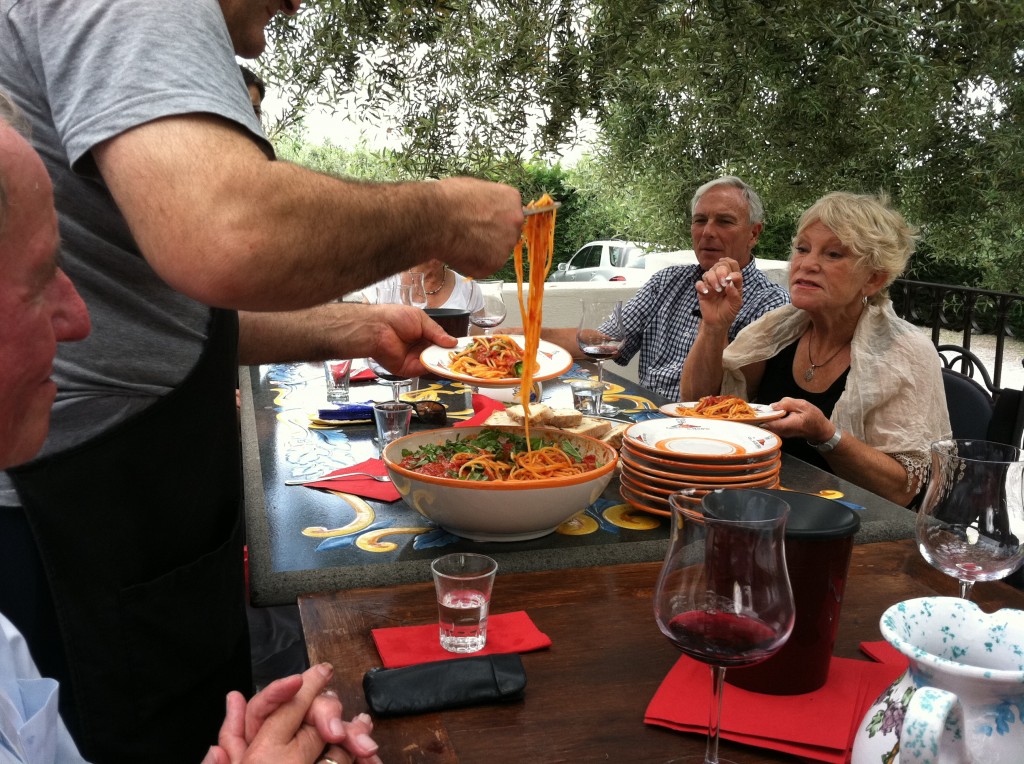
We walked through the vine rows, which were trellised much like their Roman ancestors were – as seen in wall paintings from Pompeii – nearly two thousand years ago on that fateful day in late August 79 AD/CE when Vesuvius exploded. The Monte Somma cone of the original Roman period Vesuvius stratovolcano was apparently higher than the present double cone that reaches 4,200 ft elevation (1281 meters). Subsequent eruptions have continued repeatedly in the last 500 years, with especially frequent episodes in the 18th century as seen in paintings by the likes of Pietro Fabris from 1767 and Pietro Antoniani onward to Giovanni Lusieri in 1787 and 1794 and Xavier Gatta in 1794. The Antoniani painting ca. 1774, seen below, shows the direction of the lava flow southerly toward the commune of Trecase where Cantina del Vesuvio is now located high above the town. Although this list of recent historic eruptions is far from complete, Vesuvius blew again in 1834 and the last major eruptions of Vesuvius were in 1906 and again in 1944. Sir William Hamilton, the British diplomat to the Bourbon Court as Minister Plenipotentiary of King George III, and immortalized in fact and fiction as “The Volcano Lover” also roamed these slopes for volcanic lava and scoria samples for his geological collection just as he also scoured Pompeii for antiquities while his infamous wife Lady Emma Hamilton did more than merely entertain Lord Nelson. Trecase is only a few miles northwest of Pompeii and right next to Trecase was a famous Augustan period Roman villa now known as Boscotrecase, extremely rich in Roman paintings and artifacts – many now in the Metropolitan Museum in New York – after excavation from the Vesuvian destruction of 79 AD/CE, a sumptuous villa originally owned by Marcus Agrippa, general, engineer, friend and son-in-law of the emperor Augustus and married to his daughter Julia, who herself oversaw much of the finest Roman wall painting in Boscotrecase that is among the best in the Roman world for Third Style from imperial artists. Marcus Agrippa must have chosen this region for his villa due to its great vistas and its lush volcanic fertility.
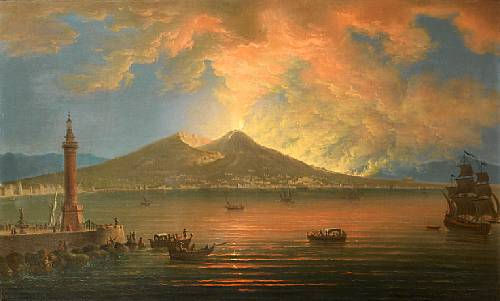
Today the Trecase trellised vines tower overhead as they climb the lower slopes of Vesuvius, their tendrils almost appearing to grow before one’s eyes because of the often refreshed volcanic mafic minerals. The local Vesuvian soil around Trecase is made up of fragmented lavas, scoria, ash and pumice. Its mineral content is low in silica but high in potassium and high in feldspathoids. Cantina del Vesuvio is on the upper reaches of Trecase in the foothills of the volcano above 500 ft. elevation and some of the vines are even higher. Clouds often cover the heights of Vesuvius because of its elevation, fostering agricultural plenty by orographic precipitation where dew point in condensation is reached here first rather than in the much hotter Naples plain below, so it has the best of all possible worlds to satisfy that old Roman epithet that Pliny described as Campania Felix, or “Happy Campania.” . The undergrowth here would be overly lush if vine growers didn’t constantly work to keep the soil bare except for the vines, preserving the nutrients for the vines instead of other vegetation, although the soil seems sufficient to share fertility with whatever plants might root here. Most of the vine rows this author examined were up to 20 to 30 years in age, although the family still maintains older vines that continue to produce good fruit quality each year.
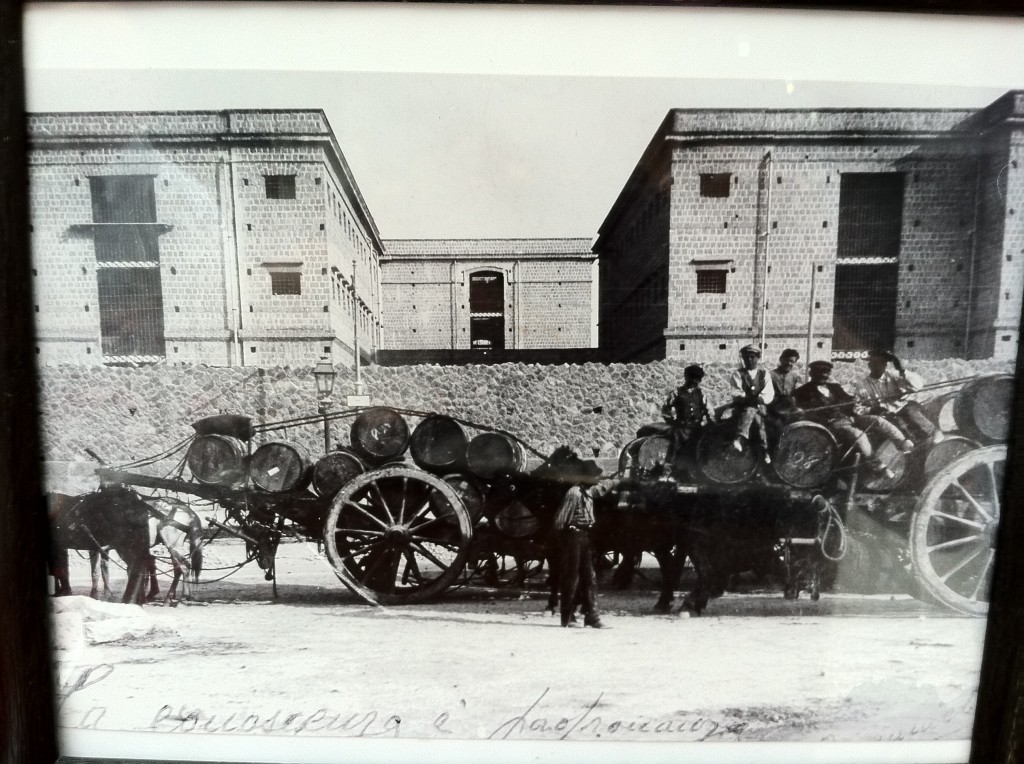
Maurizio Rosso culls most of the grapes to the lower vine branches in order to maximize fruit concentration. Thus his wines are opulent and deliver full taste even after two years in the bottle. The longevity of the wines is also likely for up to ten years because of concentrated tannins assuming good storage in cool cellars. Rosso’s vision for Vesuvian wines promises a long legacy, not only for his family but for the other Trecase growers. If other local viticoltori are as sensitive to the ecology and the land use needs as he is, the future of Vesuvian wine has still yet to reach its great promise as well as the past renown of its long Roman ancestry. Cantina del Vesuvio is high enough on the mountain to see the island of Capri across the shining bay in one direction southward and northward to the cloud-shaded cone of the modern summit of Vesuvius itself less than a mile away. But like Nietzshe who ironically warned against the folly of building houses on Vesuvius (but stated satirically, “Go ahead, build your houses on Vesuvius”), Maurizio Rosso agrees that Vesuvius is even better for great wine than great views.
